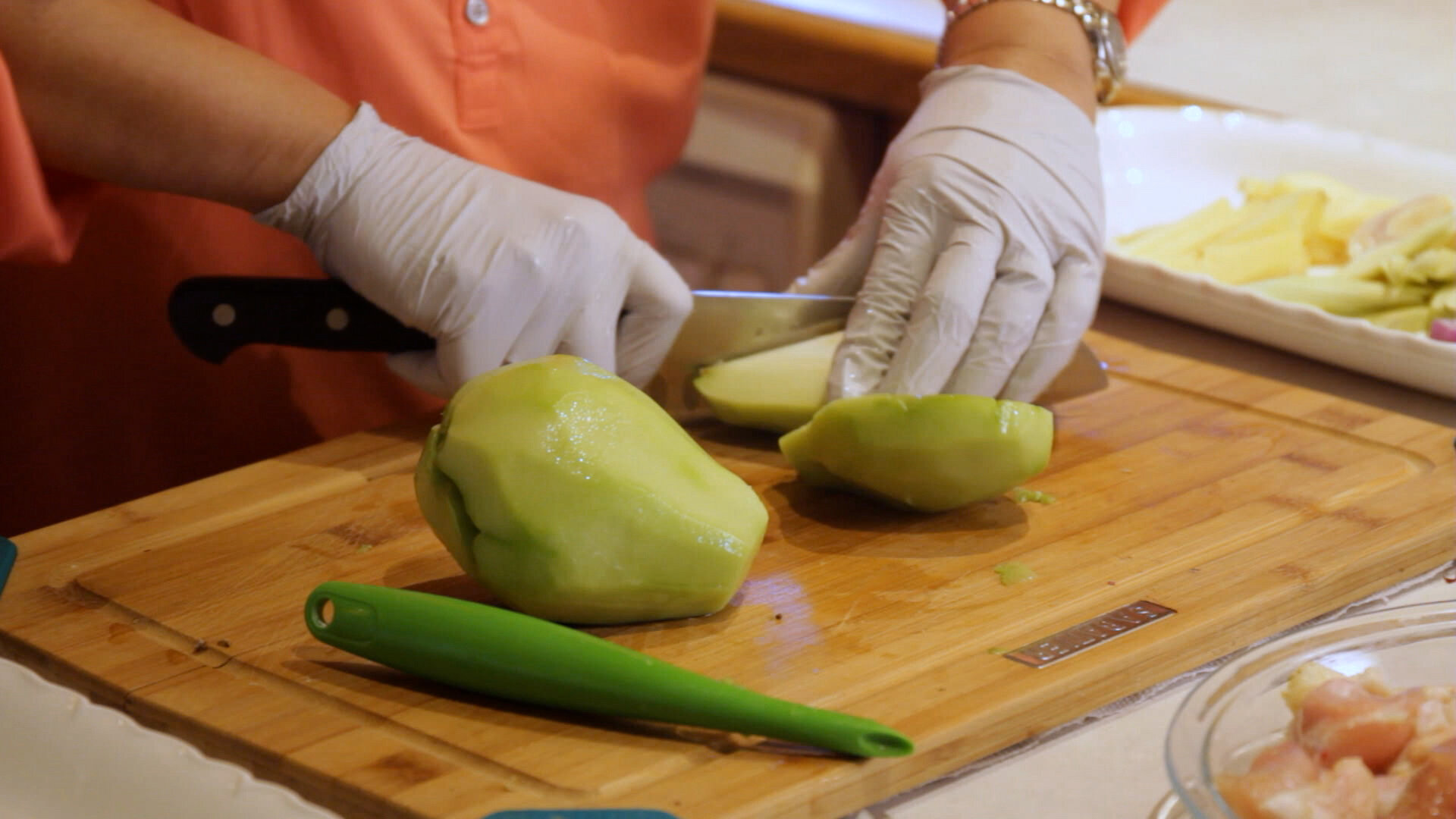Tita Vangie + Manok Halang Halang
Manok Halang Halang
prepared by Evangeline Smith
This manok halang halang recipe comes from Evangeline Smith, entrepreneur and caregiver, who hails from Bayawan City in Negros Oriental.
When her older sister in Manila needed help with childcare, Evangeline volunteered. She had never seen the capital and had always wanted to go there. She started to work part-time in her aunt’s bar, and shortly afterward met her late husband Jim. He waited a month before approaching her, but when he did, he made his intentions clear: he knew he would marry her. Taken aback, Evangeline responded that she was too young to get married and that she still had school to attend. Jim told her he was willing to wait and gave her a necklace as a friendly gift before leaving the Philippines to visit his family in the US. When he returned to Manila, he reminded her of his commitment to her and his promise to wait. Evangeline could sense Jim was a good and kind man, so in the end, he did not have to wait too long. Eight months after their initial meeting, they were married. They lived in Manila for eight years before moving to the south suburbs of Chicago, where Jim had called home for many years before his contracts in Asia. They cherished the full 33 years of their marriage in their loving home with their daughter.
Cooking came easily to Evangeline because she spent a lot of time around her father as he cooked for the family. As a middle child with seven siblings, she helped prepare ingredients and clean the kitchen and sometimes accompanied her mother to market to help her sell fish. Evangeline’s family ate a lot of fish while she was growing up, saving pork and beef for Sundays and special occasions. She took culinary classes in high school, emboldened by the knowledge she picked up from her father.
Despite all her experience cooking, nothing could have prepared her for her American husband and his American tastes. The first time Evangeline cooked fried chicken for Jim was disastrous. The insides were undercooked, he was frustrated, and her confidence was shaken. She became determined to learn how to cook to his taste and watched his mother closely when they visited her in Tennessee. She took a lot of notes and practiced diligently. She scoured local grocery stores for American products, sometimes substituting pan de sal for biscuits but making her own gravy. Over time, she became well-versed in Southern and Italian cooking, which proved to be much easier to execute after the family immigrated to America. Of course, it was during that time that Jim’s tastes changed and he began craving Filipino food. Accordingly, Evangeline taught him how to make the sour stews and braises he had grown accustomed to and together they shared a vibrant palette of flavors and foods.
When discussing her manok halang halang recipe, Tita Vangie emphasized how much more accessible some ingredients were when her father prepared the dish. Things like lemongrass, papaya, sili labuyo, and coconuts grew in their backyard. Native chickens roamed freely. This dish comforts her because it was made so often. It was made so often because it was easy. Now, she asks the butcher to recommend a substitute for native chicken. She relies on chayote’s availability at the grocery store rather than holding out hope that she will find a papaya at the correct ripeness. She reaches for the cans of coconut milk without hesitation. According Tita Vangie, more than ingredients, what really impacts a dish is the love and joy you put into your cooking, “Be happy, create the whole thing, and put your heart into cooking. That’s how you create a good dish and everybody will love it.”

